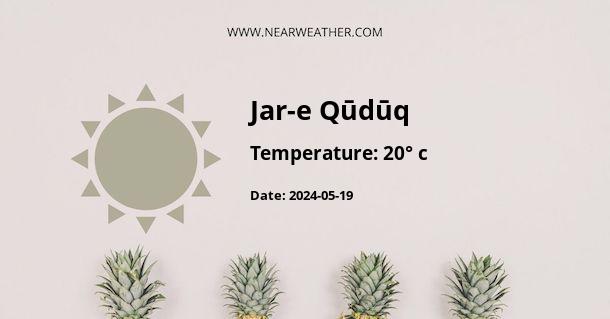Jar-e Qūdūq, Afghanistan: Climate and Weather Year Round
Located in the northeastern province of Badakhshan, Afghanistan, Jar-e Qūdūq is a beautiful village with a unique climate and weather patterns. Situated at an elevation of approximately 2,500 meters (8,200 feet) above sea level, the village experiences a continental climate with distinct seasons throughout the year. In this article, we will explore the climate and weather conditions of Jar-e Qūdūq, providing detailed information about temperature, precipitation, and other important climatic factors.
Temperature
The temperature in Jar-e Qūdūq varies significantly between seasons, with warm summers and cold winters. The village experiences a highland climate, which means that temperatures are generally cooler compared to lowland areas. Here is a breakdown of the average monthly temperatures in Jar-e Qūdūq:
| Month | Average Temperature (°C) |
|---|---|
| January | -8 |
| February | -5 |
| March | 0 |
| April | 6 |
| May | 11 |
| June | 16 |
| July | 19 |
| August | 18 |
| September | 13 |
| October | 7 |
| November | 1 |
| December | -5 |
As seen from the table, July and August are the warmest months in Jar-e Qūdūq, with average temperatures reaching around 19°C (66°F). On the other hand, January is the coldest month, with temperatures dropping to an average of -8°C (18°F). Visitors to the village should be prepared for the significant temperature fluctuations between seasons and pack appropriate clothing for their visit.
Precipitation
Jar-e Qūdūq receives a moderate amount of precipitation throughout the year, with a notable difference in the amount of rainfall between the summer and winter months. Here is an overview of the average monthly precipitation in the village:
| Month | Average Precipitation (mm) |
|---|---|
| January | 52 |
| February | 54 |
| March | 66 |
| April | 90 |
| May | 78 |
| June | 36 |
| July | 11 |
| August | 10 |
| September | 17 |
| October | 43 |
| November | 52 |
| December | 53 |
As observed from the table, the summer months of June, July, and August receive the least amount of rainfall, with averages as low as 10mm (0.4 inches). On the other hand, April and May are the wettest months, with precipitation levels reaching around 90mm (3.5 inches). It is important to note that the precipitation in Jar-e Qūdūq is relatively evenly distributed throughout the year, ensuring a consistent water supply for the village and its surroundings.
Weather Patterns and Seasonal Changes
The climate in Jar-e Qūdūq is characterized by distinct seasonal changes. Spring and autumn are transitional seasons, with mild temperatures and moderate precipitation. Summers are generally warm and dry, while winters are cold and snowy. The village experiences snowfall from November to March, with the snow cover lasting for an extended period.
The unique combination of high altitude and continental climate in Jar-e Qūdūq provides breathtaking landscapes, especially during the winter months when the village is covered in a pristine white snow blanket. The snow-capped mountains surrounding the village add to its scenic beauty, attracting visitors who enjoy winter sports and outdoor activities.
Overall, Jar-e Qūdūq offers a distinct climate and weather experience. With its cool summers, cold winters, and moderate precipitation, the village provides a unique environment for both locals and visitors alike. Whether you are interested in exploring the natural beauty of the area or experiencing the thrill of winter sports, Jar-e Qūdūq has something to offer in every season.
A - Jar-e Qūdūq's Latitude is 36.303890 & Longitude is 65.484169.
A - Weather in Jar-e Qūdūq is 9° today.
A - Climate Conditions in Jar-e Qūdūq shows overcast clouds today.
A - Humidity in Jar-e Qūdūq is 49% today.
A - Wind speed in Jar-e Qūdūq is 7.52 km/h, flowing at 255° wind direction. today.
